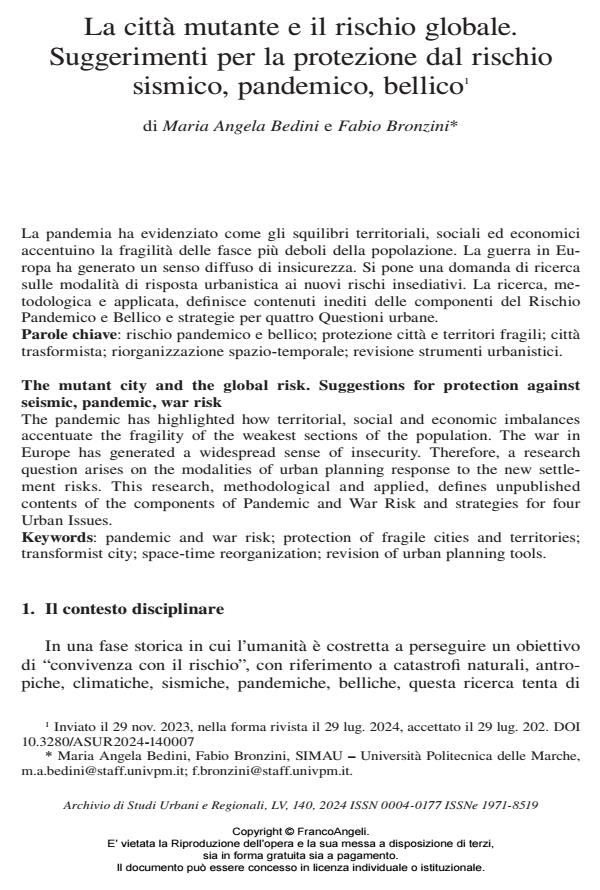The mutant city and the global risk. Suggestions for protection against seismic, pandemic, war risk
Journal title ARCHIVIO DI STUDI URBANI E REGIONALI
Author/s Maria Angela Bedini, Fabio Bronzini
Publishing Year 2024 Issue 2024/140
Language Italian Pages 27 P. 146-172 File size 910 KB
DOI 10.3280/ASUR2024-140007
DOI is like a bar code for intellectual property: to have more infomation
click here
Below, you can see the article first page
If you want to buy this article in PDF format, you can do it, following the instructions to buy download credits

FrancoAngeli is member of Publishers International Linking Association, Inc (PILA), a not-for-profit association which run the CrossRef service enabling links to and from online scholarly content.
The pandemic has highlighted how territorial, social and economic imbalances accentuate the fragility of the weakest sections of the population. The war in Europe has generated a widespread sense of insecurity. Therefore, a research question arises on the modalities of urban planning response to the new settlement risks. This research, methodological and applied, defines unpublished contents of the components of Pandemic and War Risk and strategies for four Urban Issues.
Keywords: pandemic and war risk; protection of fragile cities and territories; transformist city; space-time reorganization; revision of urban planning tools
Maria Angela Bedini, Fabio Bronzini, La città mutante e il rischio globale. Suggerimenti per la protezione dal rischio sismico, pandemico, bellico in "ARCHIVIO DI STUDI URBANI E REGIONALI" 140/2024, pp 146-172, DOI: 10.3280/ASUR2024-140007